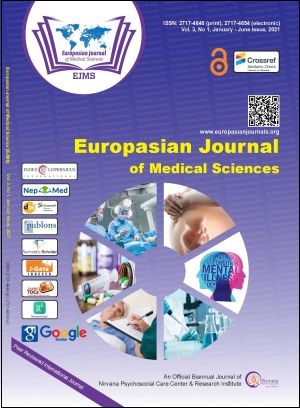Functional Outcomes of Pediatric Both Bone Fractures Fixed with Titanium Elastic Nails: A Hospital Based Study
Keywords:
Both bone fractures, Closed reduction and casting, Functional outcomes, Surgical treatment, TENsAbstract
Background: Successful treatment of both bone fractures depends on the restoration of normal alignment and full recovery of range of motion that can be achieved by either closed reduction and casting or surgical intervention. Number of surgical treatment modalities have been mentioned for unstable pediatric both bone fractures that includes Kirschner wire fixation, plating, external fixation and elastic intramedullary nailing.
Methods: This was descriptive cross-sectional study performed from January 2016 to December 2019. A total of 85 diaphyseal pediatric forearm fractures were treated surgically with titanium elastic nails(TENs) during this period. Functional outcomes and complications were analysed 6 months after surgery.
Results: The mean age of patients in our study was 10.67±1.88. There were 50 (64.1%) male and 28 (35.9%) female. Incidence of fracture is higher in left side 47 (60.2%) in comparison to right side 31 (39.8%). Fifty (64.1%) fractures were in middle third, thirteen (16.7%) fractures were in proximal third and 15 (19.2%) in distal third of both bone forearm. There were excellent outcomes in 91%, good outcomes in 6.4% and fair results in only 2.6% of patients.Seven different types of complications were noted including skin irritation 8 (10.2%), cortex perforation in 2 (2.5%) and iatrogenic fracture in 1 (1.3%) case.
Conclusions: Titanium elastic nailing is excellent treatment option for displaced unstable pediatric both bone fractures especially in elderly children. This is technically easy, minimally invasive procedure with relatively faster bone healing, easy implant removal with excellent cosmesis of skin without long ugly scar.
Downloads
Downloads
Published
How to Cite
Issue
Section
License
Copyright (c) 2021 Kapil Mani KC, Dirgha Raj RC, Parimal Acharya, Arun Sigdel, Dinesh Kumar Lamal, Sudip Chandra Dahal

This work is licensed under a Creative Commons Attribution 4.0 International License.
The author(s) retain the ownership of the copyrights for their work published in EJMS without any restrictions. Upon submission, the author(s) grants EJMS a license to publish, including to display, store, copy, and reuse the published content.
License to Publish
By submitting a manuscript to EJMS, the author(s) grant the journal a non-exclusive license to:
- Publish and distribute the content in all formats, media, and platforms (both existing and future), while identifying EJMS as the original publisher.
- Reproduce, display, and store the content in both print and online formats, including institutional and digital repositories.
- Translate, adapt, and summarize the work, including reprints, extracts, and abstracts.
- Develop derivative works based on the original content.
- Include the work in electronic databases and provide links to third-party materials.
Creative Commons Licensing
In addition to EJMS’s publishing rights, authors grant third parties the right to use, share, and distribute their work under the Creative Commons Attribution 4.0 (CC BY 4.0) International License. This allows unrestricted use of the content, provided proper attribution is given to the original author(s) and the journal.

